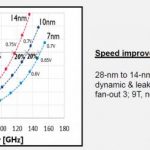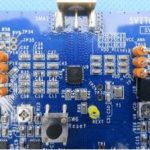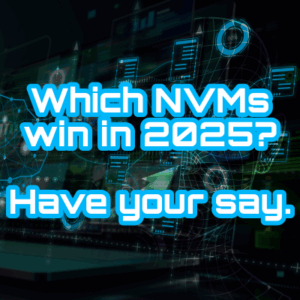V2X stands for Vehicle to Everything and to be specific, V2X technology connects vehicles to other vehicles (V2V), infrastructure (V2I), motorcycles (V2M) and pedestrians (V2P) within wireless range for safety and mobility applications. If you consider that the US Department of transportation (USDOT) is expected to publish… Read More
Author: Eric Esteve
According with ST, SiC Power Devices will Accelerate Automotive Electrification
Silicon Carbide (SiC) is a very interesting material. If you find in nature the mineral moissanite, it will be only minute quantities in certain types of meteorite. The moissanite physical properties are very similar to these of diamond, in term of density and abrasive power. In the semiconductor industry, SiC is characterized… Read More
Are Standard Cell Libs, Memories and Mixed-signal IP Availabe at 7nm FF?
More than 500 designers (562) have responded to a survey made in 2015 by Synopsys. Answering to the question “What is the fastest clock speed of your design?” 56% have mentioned a clock higher than 500 MHz (and still 40% higher than 1 GHz). If you compare with the results obtained 10 years ago, the largest proportion of answers was for… Read More
No reason for FD-SOI Roadmap to follow Moore’s law!
We in Semiwiki are writing about FD-SOI since 2012, describing all the benefits offered by the technology in term of power consumption, price per performance compared with FinFET, etc. Let me assess again that I am fully convinced that FD-SOI is a very smart and efficient way to escape from the Moore’s law paradox: the transistor… Read More
Top Mobile OEM Uses NetSpeed to Boost Its Next Gen Application Processor
The smartphone segment is certainly the most competitive market for chip makers today and the yearly product launch cadence puts a lot of pressure on the application processor design cycle. End-users expect to benefit from higher image definition, better sound quality, ever faster and more complex applications which push the… Read More
EDAC Name Changing for ESDA, but what about IP ?
The EDA Consortium (EDAC) has changed name for Electronic Systems Design Alliance (ESD Alliance). That’s a good reminder that IC are developed (thanks to Design Automation) to be integrated into a System. A wide design ecosystem support system development, including embedded software, design intellectual property (IP), … Read More
Who will provide data center Soc of the future, Intel or Qualcomm ?
Intel has been incredibly successful by designing high performance server SoC to address the data center market segment, and the chance to see the company loosing large market share is pretty low, at least in the short term. Now, if we look at the really long term, 2030 or even 2040, like did the Semiconductor Industry Association… Read More
Webinar: Design a LTE-based M2M Asset Tracker SoC with CEVA, using GNSS and OTDOA
If you could not attend live to the webinar from CEVA “Lear how to design a LTE-based M2M Asset Tracker SoC”, you have a second chance to access it remotely and to learn a lot. You will learn about CEVA’ Dragonfly platform 1 or 2, based on CEVA-XC8 or CEVA-XC5, and you will discover how mobile Machine 2 Machine (M2M) devices developed … Read More
Can you really address the Automotive market with AP designed for smartphone?
If you remember, when TI decided to exit the booming wireless segment in 2012, the company decided to re-focus their application processor product line (OMAP) initially developed for smartphone “to a broader market including industrial clients like carmakers”. Being a TI employee in the 90’s in south of France, where TI has started… Read More
Is Smart Bluetooth de facto standard for IoT Wearable, Beacons, Fitness and Health ?
Synopsys launch BTLE PHY IP, qualified by the Bluetooth Special Interest Group (SIG) and meeting compliance with the Bluetooth® Smart v4.2 specification. The company has built a partnership with Mindtree to provide a complete solution, integrating Synopsys’ Bluetooth Smart PHY IP and Mindtree’s production-proven BlueLitE… Read More










Jensen Huang Drops Donald Trump Truth Bomb on Joe Rogan Podcast